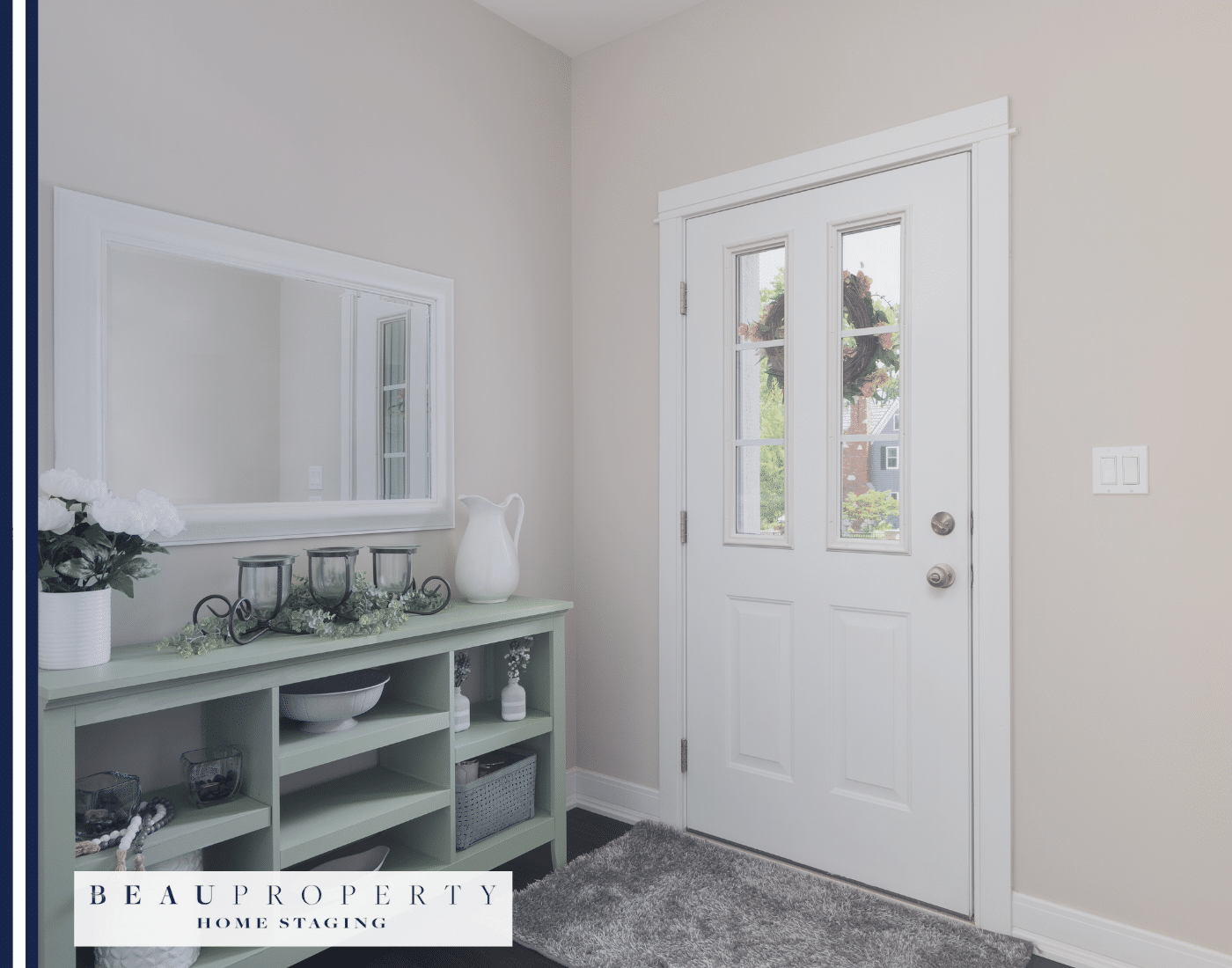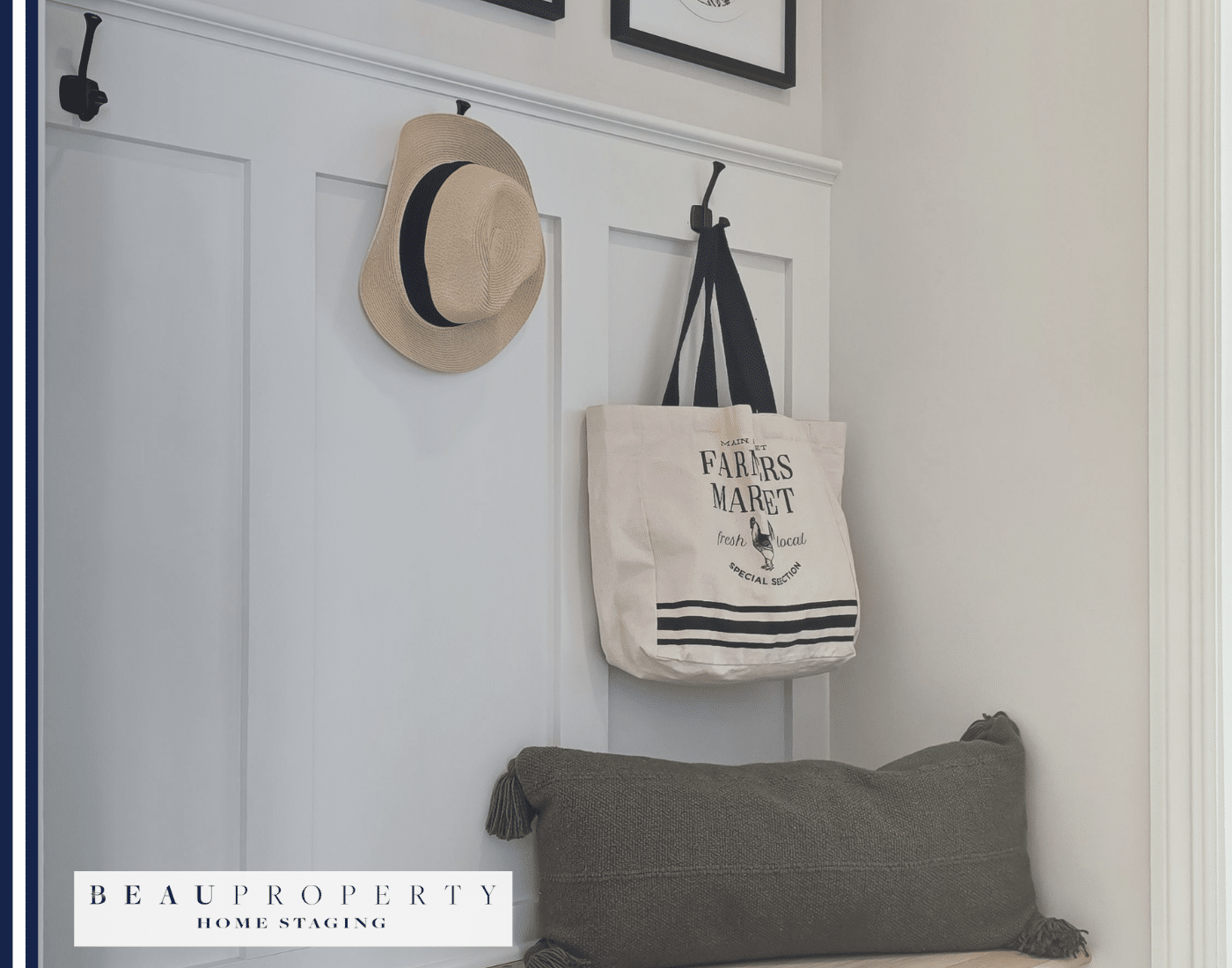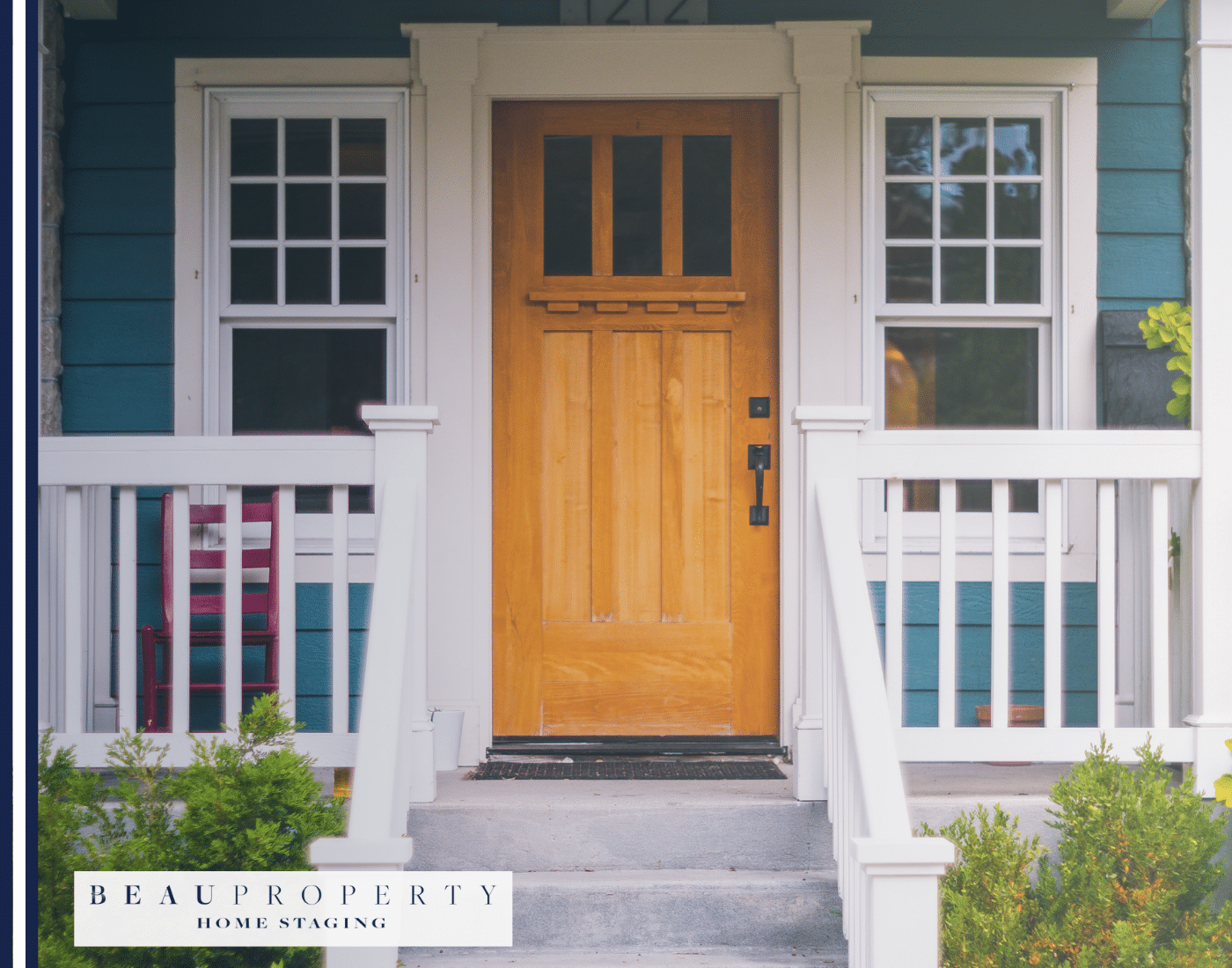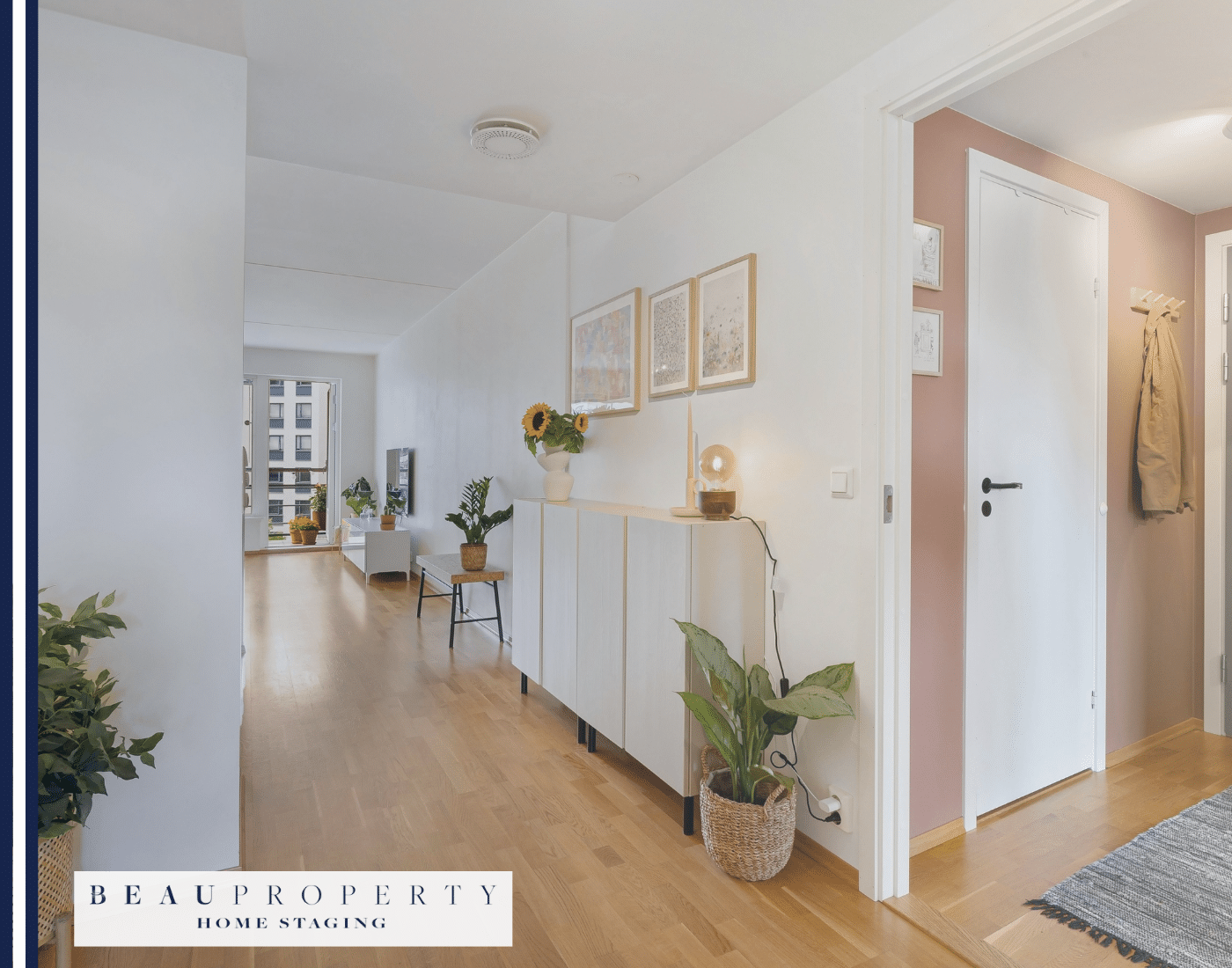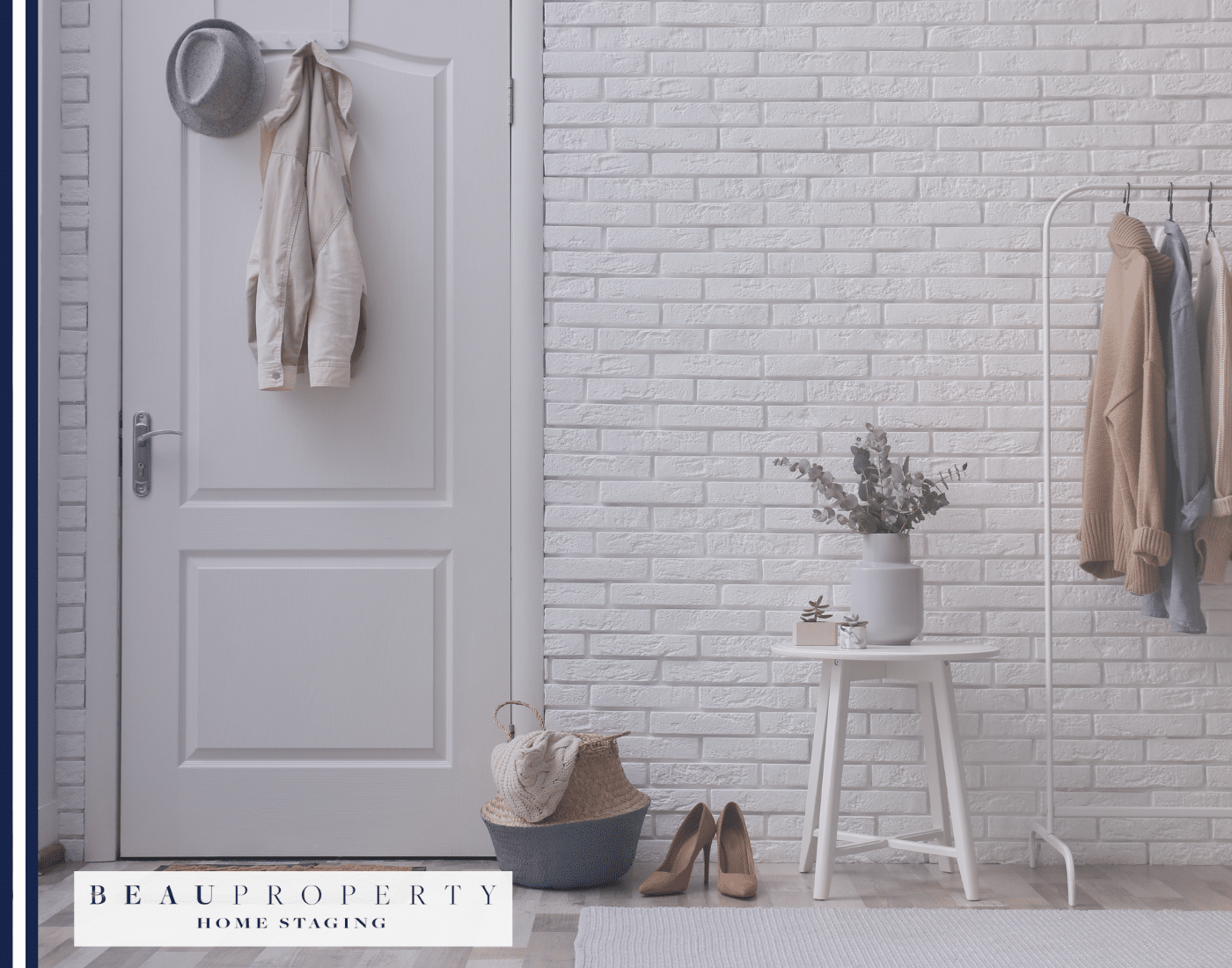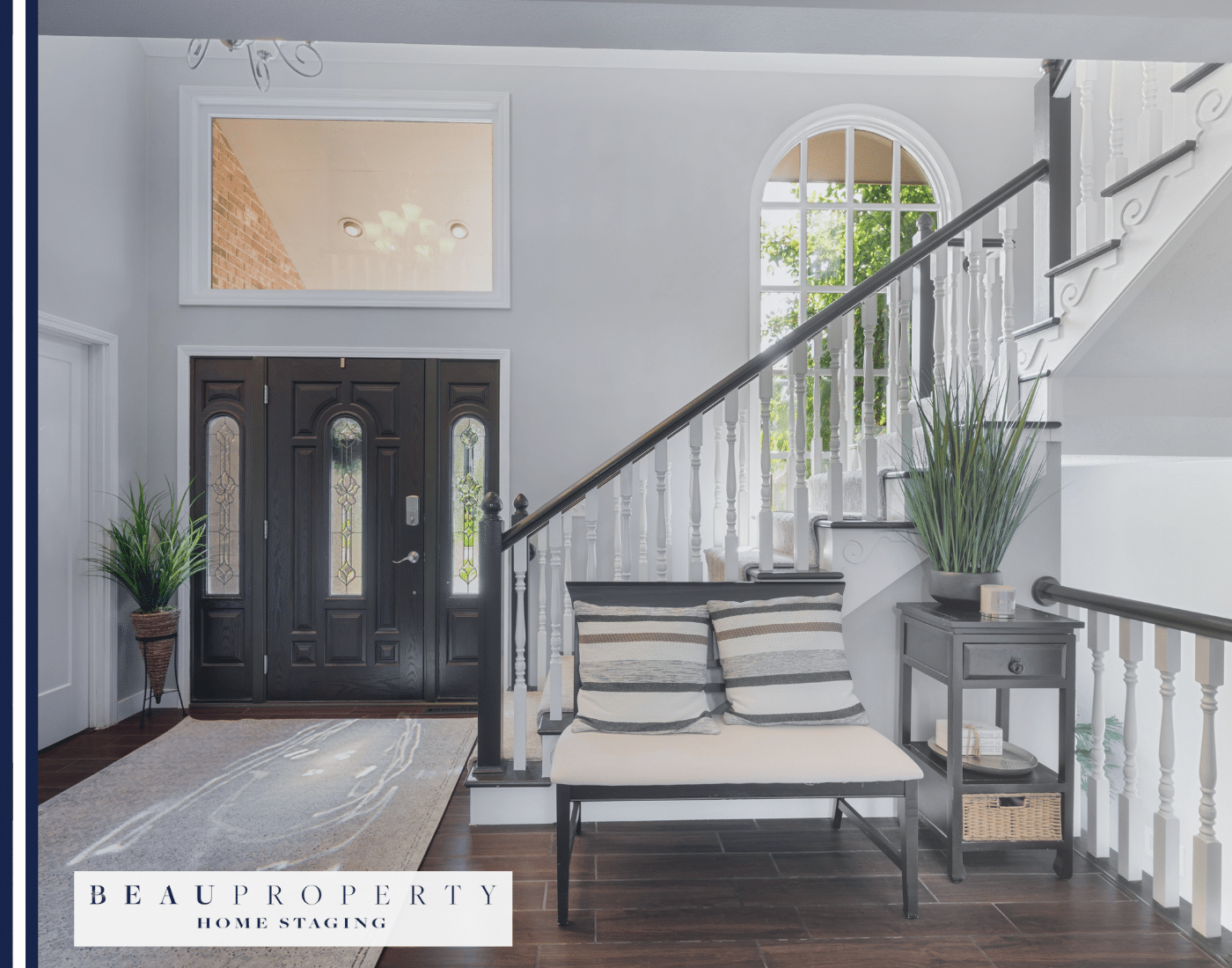Understanding the Psychology of First Impressions
The Symbolic Role of Entryways
Entryways are more than simple thresholds; they symbolise the gateway to our personal space and the values we hold inside. Throughout literature and culture, the act of crossing a threshold marks entry into the world of the homeowner, revealing not just their sense of style, but often their relationship with others and the wider community. The way we shape these spaces reflects the life and patterns within, allowing both residents and visitors alike to form attachments that are more than surface deep.
Lasting Impact in the First Few Feet
The first three to five feet of a home are powerful. As people step inside, their immediate experience forms a lasting emotional imprint. This short physical distance shapes their overall perception, often within seconds. Buyers instantly assess spatial harmony, cleanliness, and atmosphere. A thoughtfully curated entryway immediately feels intentional and welcoming, raising expectations for the rooms beyond.
Emotional Resonance of a Well-Staged Entry
A well-staged entrance does more than look good, it invites positive feelings. Calmness, curiosity, and the sense of possibility often greet those who enter a space that appears cared for and thoughtfully arranged. This early experience forges a connection, increasing the chance that visitors will see the house as a potential future home.
The Importance of Entryway Staging
Impact on Sale Speed and Offer Values
A well-staged entryway creates immediate impact, often leading to faster sales and higher offers. Studies indicate that staged homes can sell faster and fetch more than unstaged homes. Buyers are typically willing to pay more for homes that look move-in ready, and staging helps to present this ideal from the very first step inside.
Setting the Tone for the Viewing Experience
The entrance forms the crucial first impression, shaping the perception buyers have of the rest of the property. When the entry feels inviting and organised, it signals that the home is cared for, influencing buyers to look more positively at what follows. This initial atmosphere can make visitors feel comfortable and excited, rather than distracted or disappointed.
1. Declutter and Depersonalise Your Entryway
Remove Personal Items and Clutter
Start by clearing away all personal possessions from the entryway, such as family photos or souvenirs. This helps potential buyers picture themselves living in the space, rather than feeling like a guest in someone else’s home. Apply the “five-year rule”, if an item hasn’t been used in five years, it often shouldn’t stay in the entryway.
Create an Organised, Neutral Canvas
Once personal and extraneous items are gone, focus on arranging only the essentials. Use simple containers, like baskets for shoes or a small dish for keys, so everything has a designated place. An uncluttered, visually tidy look instantly makes the area feel larger and more inviting.
Enhance Space and Mood
Decluttering not only improves the appearance of the entry but also supports well-being. A neat entrance reduces stress and creates a calm atmosphere, which visitors will notice as soon as they walk in.
2. Maximise Lighting for a Welcoming Entrance
Layering Lighting for Impact
The right lighting transforms your entryway from a simple threshold into a warm, inviting space. Combining ambient, task, and accent lighting is key. Pendant lights, chandeliers, and wall sconces can be layered to achieve both functionality and style, making your entrance feel balanced and well-lit regardless of its size or design complexity. For long or narrow spaces, placing lighting fixtures every 6-8 feet ensures even illumination and avoids dark corners.
Leveraging Natural Light and Reflection
Maximise daylight by choosing smart window treatments like solar shades or light-filtering panels that allow sunshine in while still providing privacy. Mirrors placed opposite windows or doors help spread light and make the area feel larger and brighter, especially in small or narrow entryways.
Selecting Bulb Temperature and Brightness
Opt for warm-toned bulbs (2700K–3000K) to create an inviting atmosphere. A small entryway benefits from 1,000–2,000 lumens, while larger spaces may need more. LED bulbs are energy-efficient and maintain consistent brightness for years.
3. Choose a Neutral Colour Palette
Creating a Spacious and Inviting Entryway
Choosing the right neutral tones for your entryway sets a foundation for the entire home. Shades such as soft beige, taupe, greige, and off-white help create a calm, clean look, making small spaces appear airier and more welcoming. Selecting neutrals also allows both natural and artificial light to bounce around the area, enhancing brightness and perceived space.
Adding Pops of Colour with Restraint
Neutrals do not have to be bland. Introduce interest with subtle touches: a patterned rug, muted artwork, or statement vases. Incorporate metallics like brass or a gentle blue-grey accent for depth without visual clutter. These small elements, layered onto a neutral base, prevent the space from feeling cold or impersonal.
The Psychology of Colour in Welcoming Spaces
Colours influence emotion and perception. While individual associations can differ, neutral palettes tend to convey tranquility and order, which are broadly appealing to buyers. A gentle contrast or an isolated accent, like a navy cushion or a clay-toned plant pot, can draw attention and create a memorable impression, utilising what psychologists call the “isolation effect”.
4. Enhance Kerb Appeal
Creating a Strong First Impression
Kerb appeal starts the moment potential buyers see your property. A tidy, attractive exterior sets the expectation that the home is cared for inside and out. Start by giving your front door a fresh coat of paint. Bright, neutral shades work well to catch the eye. Well-maintained windows and frames, along with a clean driveway and walkway, create a strong impression of order and pride in ownership.
Simple Landscaping Touches
Well-chosen landscaping can have a significant impact. Mow lawns regularly, edge pathways, and keep flower beds weed-free. Add some potted plants or hanging baskets by the door for colour and vibrancy. Healthy greenery, when kept pruned and mulched, encourages buyers to look closer and adds up to 20% to home value.
Presenting a Well-Maintained Entrance
The front door and porch are essential. Regularly clean, polish, and repair the door, including hinges, weatherstripping, and hardware. Conceal bins and tidy away unnecessary clutter for a clear path to the entrance. A welcoming, well-lit porch invites buyers into your home with confidence.
5. Select Strategic Flooring Options
Durable, Attractive Flooring Choices
Entryways see heavy foot traffic, moisture, and dirt, so choosing the right flooring is vital. Vinyl remains one of the most resilient options, being scratch-resistant, easy to clean, and low maintenance. Luxury vinyl tiles (LVT) and planks are favoured for their durability and resistance to everyday wear, making them a reliable choice for busy households. For those preferring a traditional look, hardwood and engineered hardwood floors combine resilience with enduring style. Porcelain and ceramic tiles also stand out for high-traffic entryways owing to their water and stain resistance and broad design variety.
Using Rugs to Define and Warm the Space
A well-placed rug can shape your entrance visually and add comfort underfoot. Runner rugs elongate narrow entryways, while a larger rectangular or round rug can define a spacious foyer. Aim to leave 12–24 inches between the rug and the wall to avoid overwhelming the space. Light-coloured rugs can help make an entryway feel brighter and more expansive, whilst darker shades hide dirt from outdoor shoes. Opt for durable materials like nylon or polyester that handle high traffic and are easy to clean.
Sustainable Flooring Options
Modern buyers value sustainability. Bamboo, cork, and reclaimed wood are renewable choices that reduce environmental impact. Wool carpets and natural linoleum also offer eco-friendly alternatives suited to entryways. These options provide durability, style, and peace of mind for health-conscious buyers.
6. Incorporate Functional Storage Solutions
Blend Style with Practicality
Creating a clutter-free entryway need not sacrifice style. Clever storage options, such as slim benches with hidden compartments, wall-mounted shelves, or narrow cabinets, allow you to reduce clutter while enhancing visual appeal. Choose furniture in tones that complement your décor, and opt for pieces with clean lines for a streamlined look.
Balancing Function and Aesthetics
Storage furniture should serve a clear purpose yet feel seamless within the space. Baskets made from natural fibres can tidy away shoes or hats while adding texture. Consider floating hooks or minimal railings for coats and bags, which keep essentials organised without crowding the entry. Tall cabinets in pale finishes reflect light and make the area feel open.
Concealing Everyday Items
To ensure buyers view a serene, orderly space, hide everyday necessities during viewings. Place personal items in lidded boxes or beneath console tables. Use drawer organisers to contain keys and post. This subtle approach keeps surfaces clear and the entryway inviting.
7. Add Thoughtful Decorative Elements
Creating Focal Points Without Overwhelm
A well-staged entryway benefits from selected statement pieces that draw the eye, such as a distinctive artwork or striking vase. The aim is to create a central focus, but keep things restrained, avoid filling every surface. Less is more; a single bold piece on a console or a cluster of smaller accents can provide interest without making the space feel busy.
Using Mirrors for Space and Light
Mirrors are a practical and stylish way to enhance entryways. Placing a full-length mirror or a group of decorative mirrors can reflect light and make the area appear larger. Position mirrors to bounce natural light deeper into the hallway, increasing the sense of space and brightness. This visual trick is effective even in narrow or dimmer entryways, as mirrors create the illusion of depth and openness.
Freshness with Plants and Flowers
Plant life brings natural vibrancy and warmth to any entrance. Choose foliage suited to the light conditions, such as lush, broad-leafed plants or colourful flowering varieties like flamingo plants or poinsettias. Plants instantly make an entryway more welcoming, while fresh flowers offer fragrance and seasonal colour. Keeping greenery well-maintained ensures the area looks inviting and cared for.
8. Create a Defined Entryway When There Isn’t One
When your home lacks a distinct entryway, thoughtful design can still create a welcoming area that feels intentional. Start by using furniture placement to mark out the space. Position a console table or slim bench near the front door to form a visual barrier, this acts as a subtle “wall” between the entrance and living area. Ensuite, add a well-fitted rug underfoot; this gives a tactile cue and visually anchors the zone.
Lighting is another useful tool. Statement pendants or wall sconces overhead help illuminate and define the entrance, signalling a transition from outside to in. Consider pop-up dividers, open shelving, or even a sofa turned to face away from the door to reinforce the separation without blocking light or space. Thoughtful arrangement sets a positive first impression as buyers cross the threshold, encouraging them to visualise the rest of the home with ease.
9. Update Door Hardware and Fixtures
Upgrading entryway hardware is a simple way to make an immediate impact on your home’s first impression. Fresh door handles, knockers, and letterboxes can instantly transform a tired entrance into a stylish, inviting focal point. Select hardware in finishes that align with your home’s architectural style; for example, brushed nickel for contemporary designs, or classic brass for more traditional homes.
When choosing new fixtures, prioritise those that are both durable and visually appealing. Hardware should feel solid and pleasant to the touch, signalling a well-maintained property. Budget-friendly upgrades are widely available, allowing you to refresh the look without extensive spending. New fixtures do not require costly renovations, yet they significantly enhance kerb appeal and set a positive expectation as buyers step through the door.
10. Implement the 3-Foot-5-Foot Rule
Understanding Buyers’ Perspectives
Buyers notice details differently, depending on how close they are to the entryway. The 3-Foot-5-Foot Rule recognises two key perspectives: within three feet, visitors pick up on small details like scuffed skirting boards or dusty surfaces; from five feet, they judge the overall composition and flow of the space. By styling for both ranges, you ensure nothing lets down that vital first impression.
Techniques for Effective Styling
To address the closer view, check that surfaces are spotless, hardware shines, and decorative accents are flawless. For the wider perspective, step back and assess balance, symmetry, and how light fills the area. Choose furnishings and décor that work together, creating harmony and avoiding visual clutter.
Common Mistakes and How to Avoid Them
A frequent mistake is focusing solely on either micro-details or the big picture, but not both. Overdecorating, or leaving hidden dirt, can detract from the experience. Consistency at every distance ensures the space feels inviting and thoughtfully prepared.
11. Add Personal Touches Without Personalisation
Creating a Lived-In Feel
A welcoming entryway should feel warm and lived-in, yet stay neutral enough for any buyer to imagine themselves living there. Instead of using family photographs or overtly personal items, opt for carefully selected decor pieces. Practical accents such as trays, catch-all dishes on a console table, or a neatly styled basket for keys and mail provide function and a homely touch without revealing personal stories.
Adding Subtle Character
Introduce character with items like textured textiles, a vibrant area rug, or a vase of fresh flowers. Candles or ceramic bowls can add interest and height to a surface without overwhelming the space. Statement mirrors help reflect light and make the area more inviting, while a piece of abstract or local art offers a talking point that appeals broadly.
Balancing Warmth and Neutrality
For that ideal balance, use neutral tones and natural materials, think woven baskets or wooden surfaces. Layering with simple, elegant accessories, such as a cosy throw or a small indoor plant, enhances the sense of comfort. This approach invites buyers to picture their own routines here, setting a positive tone as they step inside.
12. Optimise for Seasonal Appeal
Adapting your entryway to the current season enhances both comfort and visual interest for buyers. In colder months, choose thicker doormats to capture debris, and add a basket for umbrellas or wellies. Layer with textured rugs and chunky throws in a muted palette to evoke warmth. During milder seasons, opt for lighter mats, fresh flowers, and woven baskets, these subtle touches suggest a breezy, inviting home.
Consider accents that reflect the weather: autumn might mean a tasteful arrangement of dried foliage, while spring calls for greenery or fragrant blooms. Always aim for accessories that add charm but do not clutter the space, ensuring buyers can still envision their own items in the entryway.
13. Consider Wall Treatments
Adding Character Through Creative Wall Treatments
Wall treatments can redefine an entryway, providing visual interest and a sense of individuality. Options like wall panelling, wallpaper, or creative paint techniques are all effective ways to add texture, depth, and personality. Panel effects such as bead board, shiplap, or wainscoting are especially popular for introducing architectural charm, while being accessible for DIY improvements. If classic wood panels are beyond your budget, modern alternatives like vinyl or SPC wall panels offer a similar impact at a lower cost, delivering durability and contemporary style.
Wallpaper and accent paint create immediate drama or subtle interest, depending on your choice of pattern and palette. For smaller entryways, lighter tones or simple patterns help prevent the space feeling crowded, keeping it bright and open. Feature walls using wallpaper or bold paint can act as focal points without overwhelming the area, especially when applied to a single surface.
Achieving a striking effect does not require a large investment. Peel-and-stick wallpapers, painted geometric patterns, or cost-effective panel kits are budget-friendly options that yield significant visual returns. These enhancements help create a welcoming impression from the moment visitors step inside, laying the groundwork for functional storage solutions and decorative details in later improvements.
14. Scale Furniture Appropriately
Choosing the Right Size for Your Space
Selecting furniture for your entryway is about proportion and functionality. Overcrowding the space with large pieces can make it feel cramped and uninviting. Opt for slim benches, narrow consoles, or petite shelves that fit the scale of the area. Aim for at least 30 to 36 inches of walking space between major pieces to maintain smooth flow and prevent congestion. This ensures easy movement and comfort right from the entrance.
Avoiding Common Mistakes
Oversized furniture often overwhelms small entryways, while undersized pieces can make large ones feel empty. Striking the right balance is key. Use visual anchors like a modest table or a sleek bench to ground the space, keeping circulation pathways clear for a welcoming feel.
Achieving Visual and Functional Balance
Think in zones: designate space for seating, storage, or displays without cluttering the entry. Multi-functional pieces, such as storage benches or wall-mounted hooks, maximise utility and keep mess at bay. Remember, the best entryway layouts harmonise open space and purposeful furniture, creating an inviting atmosphere for everyone who steps inside.
15. Appeal to Multiple Senses
Creating a Multi-Sensory Welcome
A truly inviting entryway goes beyond visual appeal. By appealing to sight, sound, scent, and touch, you create a space that feels both memorable and welcoming. Pleasant background music, such as soft classical or gentle nature sounds, helps put visitors at ease the moment they step inside. It’s important to eliminate distracting noises to maintain a calm atmosphere.
A carefully chosen scent, perhaps from a fresh bouquet or a subtle diffuser, can suggest cleanliness and comfort. Texture also plays a key role. Layering furnishings such as woven rugs, upholstered benches, or textured wall hangings invites tactile engagement and adds warmth to the space. These sensory touches combine to help buyers connect emotionally, boosting the sense of arrival and belonging as they cross the threshold.
16. Fix and Clean Thoroughly
Impeccable Cleanliness as a Foundation
A spotless entryway instantly conveys that a home has been well cared-for and maintained. First, remove every item from the space, including closets, for a thorough reset. Begin by dusting from top to bottom, shelves, skirting boards, light fittings, and corners where cobwebs can collect. Next, vacuum and mop the floor to remove both visible dirt and hidden dust, ensuring mats are shaken before cleaning beneath them. Don’t forget to clean windows and door glass, as smudges can dull even the brightest entry.
Address Minor Repairs
Prospective buyers notice details like scuffed woodwork, chipped paint, and damaged flooring. Take time to patch holes in walls, repaint worn areas, tighten loose hardware, and repair small cracks in paths or trims. Attending to these minor issues stops buyers from imagining extra work ahead.
Entryway Cleaning Checklist
- Dust shelves, light fittings, and visible fixtures.
- Wipe doors, handles, and sideboards with a disinfecting cleaner.
- Spot-clean or touch up walls, especially around coat hooks or corners.
- Polish mirrors and glass to erase fingerprints and streaks.
- Sweep, vacuum, and mop all flooring thoroughly.
- Sanitise baskets, trays, and storage bins.
- Remove grime from skirting boards and behind doors.
Attentive cleaning and minor repairs transform the entryway into an inviting, move-in-ready introduction to the home. This careful preparation enhances both visual appeal and perceived value.
17. Work with Professional Stagers for Maximum Impact
Why Professional Stagers Deliver Results
Hiring professional stagers can transform your home’s entryway, delivering a strong first impression that resonates with buyers. Experts like Beau Property Staging understand what appeals to today’s market, and know how to highlight your home’s best features. A skilled stager offers objective advice, avoids common pitfalls, and draws on training to create spaces that look both welcoming and stylish. Their expertise often results in faster sales and higher offers, with homeowners typically seeing returns that far exceed the cost of staging.
When Professional Staging Makes Sense
It is wise to consider professional staging before listing your home, rather than waiting for slow results on the market. Stagers manage stress for sellers and facilitate smoother sales by presenting homes at their best right from the start. Look for certified stagers with strong portfolios and client testimonials, and always check for proper contracts and insurance.
Applying Staging Advice Without Overspending
On a tight budget, sellers can still benefit from professional advice. Many stagers offer consultations for a one-time fee and provide actionable recommendations. Simple changes based on expert input, such as rearranging furniture, using mirrors for light, or enhancing kerb appeal, can yield impactful results without major expenditure. Thoughtful planning ensures that any effort, large or small, reflects a high standard and maximises appeal.

